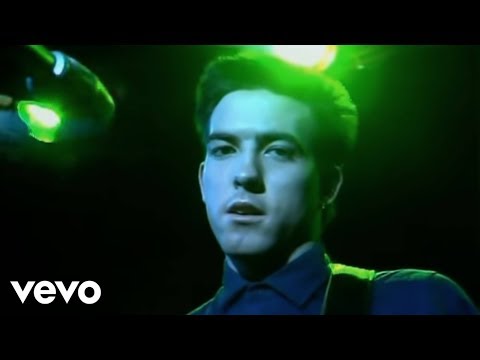The Cure: A Deep Dive Into Their Music, Legacy, and Lasting Influence
The Cure is a name that resonates across generations, carrying with it a weight of influence that few bands can rival. Known for their brooding melodies, emotionally charged lyrics, and an ability to weave atmosphere into sound, The Cure’s music has touched on themes of heartbreak, love, alienation, and existential longing. While Robert Smith, the band’s iconic frontman, has consistently distanced the group from the goth label, there’s no denying their profound impact on the genre and the culture that surrounds it. We take a journey through The Cure’s evolution, exploring their music, their lasting legacy, and the indelible influence they’ve left on both fans and fellow artists alike.
Formation and Early Years
The Cure’s story begins in 1976, during the height of the punk revolution in the UK. Robert Smith, who had a passion for both punk rock and more experimental sounds, was joined by bassist Michael Dempsey and drummer Lol Tolhurst to form the original lineup of the band. They played their first gigs under the name Easy Cure before shortening it to The Cure—a name that would come to symbolize their ability to capture emotional complexities in their music.
Their first album, Three Imaginary Boys (1979), introduced a band still finding their feet in the vast world of post-punk. The album showed glimpses of The Cure’s signature sound, mixing angular guitar riffs with Smith’s distinctive voice. The track “Boys Don’t Cry,” with its upbeat tempo yet sad undertones, was a key moment in their early career. Yet, it was the raw energy of their live performances, particularly the energy and tension between Smith and the audience, that set the stage for their rise to prominence.
The Transformation: From Post-Punk to Darker Realms
By the early 1980s, The Cure began exploring darker, more atmospheric territories. Their second album, Seventeen Seconds (1980), signaled a major shift in their sound. Moving away from the playful, almost new wave elements of their debut, Seventeen Seconds embraced a more introspective and minimalist style. This record marked the band’s first real dive into the atmospheric soundscapes that would come to define their career. The track “A Forest,” with its deep, hypnotic bassline and Smith’s melancholy delivery, became an instant classic and a song that would haunt listeners for years to come.
The follow-up album, Faith (1981), deepened this darkening musical trajectory. This album’s sound was solemn and dense, with layered textures and somber tones. The album’s standout tracks like “The Drowning Man” and “Faith” were anthems of despair, delving into themes of isolation and an almost spiritual crisis. The brooding atmosphere of Faith became the perfect backdrop for Smith’s tortured vocals, giving life to the existential angst that defined much of the band’s early work.
It was, however, their 1982 album, Pornography, that would define a darker chapter in The Cure’s history. From the first notes of “One Hundred Years” to the final, unsettling moments of “A Short Term Effect,” Pornography was a wild, chaotic journey into the depths of despair. The album’s stark production and emotionally intense themes solidified The Cure’s place as one of the most influential forces in the nascent goth subculture, even if Smith would later distance himself from the label.
The Cure and the “Goth” Label: A Relationship of Distance
One of the most debated topics surrounding The Cure has been their connection to the goth subculture. While their music undoubtedly resonated with gothic sensibilities—particularly in their darker albums like Pornography and Disintegration—Robert Smith has always maintained that The Cure was never intended to be a “goth” band.
Smith has openly rejected the label, stating in interviews that The Cure’s music encompasses a wide range of emotional experiences that go beyond the confines of goth music. While elements of their sound may align with the darker side of the goth scene, Smith has emphasized that the band’s emotional complexity and musical diversity go beyond a single genre. For him, The Cure was about the emotional depth in their sound, not about fitting into the stereotypical expectations of the goth subculture.
Despite Smith’s disavowal of the “goth” label, there is no denying The Cure’s influence on the goth scene. From their ethereal and melancholic soundscapes to their lyrical focus on themes of love, alienation, and despair, they played a central role in shaping what we now recognize as gothic rock. Bands that emerged in the 1980s and 1990s, from The Jesus and Mary Chain to the more modern wave of gothic bands, found inspiration in The Cure’s atmospheric style and deeply emotional sound.
The Cure’s Evolution: From Darkness to Pop and Back Again
In the mid-1980s, The Cure began to experiment with new sounds, incorporating more pop and psychedelia into their music. The 1984 album The Top was a clear departure from the dark post-punk of their previous albums, with songs like “The Caterpillar” and “Birdmad Girl” offering a more whimsical, experimental feel. While still emotionally charged, these tracks marked a lightening of the mood, and the band’s ever-evolving sound was a reflection of Robert Smith’s refusal to be confined by any single genre.
Then came The Head on the Door (1985), arguably one of The Cure’s most commercially successful albums. The album’s upbeat songs like “In Between Days” and “Close to Me” were filled with catchy hooks and a more accessible sound. Still, beneath the surface of these poppy moments was a sense of sadness and yearning that had always defined The Cure’s music. The band had successfully merged their darker roots with pop sensibilities, proving that their versatility could appeal to both mainstream audiences and their dedicated fanbase.
But it was Disintegration (1989) that would return The Cure to the more introspective and brooding atmosphere that had made them famous. The album was a cathartic, emotional release, with Smith channeling years of personal turmoil into its creation. The haunting melodies of “Lovesong,” “Pictures of You,” and “Plainsong” showcased the band’s ability to combine beauty with melancholy, creating songs that are at once heartbreaking and transcendent.
The Cure’s Enduring Legacy and Influence
The Cure’s influence on music cannot be overstated. Over the years, they have remained an inspiration for artists across a wide variety of genres. Their ability to blend melancholy with beauty, to take listeners on emotional journeys with every album, has set them apart as true innovators. The band’s influence is seen in everyone from the dark rock sounds of Interpol and Editors to the indie rock of The National and Protomartyr.
Their commitment to musical exploration has allowed them to stay relevant for decades, never becoming stagnant but always evolving. Whether diving deep into atmospheric, gothic realms or reaching for more pop-oriented territory, The Cure has always stayed true to their emotional core—something that continues to resonate with fans old and new.
Additionally, the band’s visual aesthetic, epitomized by Robert Smith’s iconic look—wild hair, smeared lipstick, and dark clothing—has made them a recognizable symbol of the gothic and alternative cultures. Smith, in his own way, became the face of the misunderstood artist, the tortured soul who poured his inner struggles into his music. His influence on gothic fashion, coupled with his status as an enduring icon, has kept The Cure’s legacy alive for generations.
The Band’s Music Continues to Touch New Generations
Despite the years, The Cure’s music continues to find new audiences. Their influence has remained steadfast, with their albums regularly appearing on “best-of” lists, and their music continues to be discovered by younger generations through the ever-growing world of streaming. In an era where nostalgia plays a large part in music consumption, The Cure’s ability to evoke raw emotion has allowed them to stand the test of time.
The band’s 2019 induction into the Rock and Roll Hall of Fame was a momentous occasion, recognizing not only their musical achievements but also their impact on culture. As the world of music continues to evolve, The Cure remains a defining force, bridging generations of listeners through their powerful, evocative sound.
A Band Beyond Labels
The Cure’s story is one of emotional depth, artistic evolution, and cultural impact. From their early post-punk days to their commercial success in the mid-80s and their emotional resurgence with Disintegration, The Cure has continued to transcend boundaries, all while maintaining an undeniable connection with their fans. Despite Robert Smith’s refusal to be pinned down by the “goth” label, The Cure’s influence on the goth scene is undeniable, and their music continues to inspire new generations of artists and listeners alike.
In the end, The Cure’s legacy lies not in their ability to fit into a specific genre but in their unwavering commitment to creating music that speaks to the soul. Whether through the dark, haunting melodies of their early work or the more accessible pop hits of the ’80s and ’90s, their music remains a testament to the power of art to capture the deepest emotions and experiences of the human condition.





Add Comment